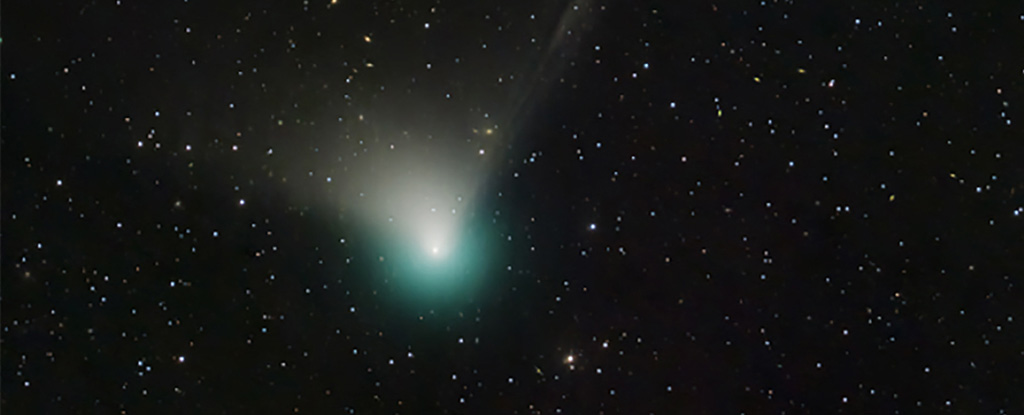A newly discovered comet could be visible to the naked eye as it zooms past Earth and Sun for the first time in 50,000 years, astronomers have said.
The comet is named C/2022 E3 (ZTF) after the Zwicky Transient Facility that first saw it pass Jupiter in March last year.
Having traveled from the frigid reaches of our solar system, it will make its closest approach to the Sun on January 12 and its closest to Earth on February 1.
It’s easy to spot with a good pair of binoculars, and probably even with the naked eye, provided the sky isn’t overly lit by city lights or the moon.
The comet “will be at its brightest when it’s closest to Earth,” Thomas Prince, a physics professor at the California Institute of Technology who works at the Zwicky Transient Facility, told AFP.
The comet, made of ice and dust and emitting a greenish aura, is estimated to be about a kilometer in diameter, said Nicolas Biver, an astrophysicist at the Paris Observatory.
This makes it significantly smaller than NEOWISE, the last naked-eye comet to pass Earth in March 2020, and Hale-Bopp, which swept by in 1997 with a possible living diameter of around 60 kilometers.
But the latest visit will be closer to Earth, which “might make up for the fact that it’s not very big,” Biver said.
While the comet will be at its brightest when it passes Earth in early February, a full moon could make it harder to spot.
For the northern hemisphere, Biver suggested the last week of January, when the comet passes between the constellations Ursa Minor and Ursa Major.
The new moon over the weekend of January 21-22 offers good opportunities for stargazers, he said.
“We might also get a nice surprise, and the object might be twice as bright as expected,” added Biver.
Prince said another opportunity to locate the comet in the sky will come on February 10, when it gets closer Mars.
“Rare Visitor”
The comet has spent most of its life “at least 2,500 times further from the Sun than Earth,” Prince said.
Biver said the comet is thought to have originated in the Oort Cloud, a theorized giant sphere surrounding the solar system and home to mysterious icy objects.
The last time the comet passed Earth was during the Paleolithic period, when Neanderthals still roams the earth.
Prince said the comet’s next visit to the inner solar system is expected in another 50,000 years.
But Biver said there was a chance the comet would be “permanently ejected from the solar system” after that visit.
Among those watching closely will be the James Webb Space Telescope. However, it will not take pictures, but will study the comet’s composition, Biver said.
The closer the comet is to Earth, the easier it is for telescopes to measure its composition “as the Sun boils off its outer layers,” Prince said.
This “rare visitor” will “give us information about the inhabitants of our solar system far beyond the most distant planets,” he added.





